American military historian: the most important aspects of Marshal Ogarkov’s reforms remain relevant
The cold war that dominated global geopolitics for almost 50 years remained so because two rival countries emerged from World War II as victorious superstates with undivided military capabilities and unprecedented coverage of territories under their control or within their spheres of influence. Despite drastically different ideologies and political systems, the USSR and the USA realized the risks and potential costs of war, especially after both powers became nuclear by the end of the 1940s. In a word, as soon as the nuclear gin escaped from the bottle, both countries recognized that the deliberate unleashing of world war was no longer an expedient action.
Given this specific limitation, the subsequent action has become a protracted game of strategic cat and mouse, during which both countries mutually maneuvered in order to occupy a more advantageous position - militarily, politically and economically. The tool in this game was military strategy, inherent to each side, its understanding, which governed the nature of rivalry and imposed restrictions on the use of military force by the parties. Both states tacitly recognized that nuclear parity was literally a “balance of fear”. This different reading of military strategy, in turn, was based on the evolution of the views of the parties on the changing nature of war and, in particular, on the impact of scientific and technological progress in armaments on the nature, course and outcome of hostilities.
There is an opinion that this cat-and-mouse game proceeded quite successfully and relatively peacefully for each of the parties insofar as none of them tried to go beyond the limitations imposed by this very "equilibrium of fear." While this view is generally correct, a deeper study of the military strategy of the opposing sides shows, however, that at a certain stage of the Cold War, the USSR developed a strategic concept based on the conviction that a large-scale conventional war could be waged in a nuclear context. a known chance that the escalation towards a global nuclear exchange will be avoided. Thus, from the middle of the 1970-s to the 1984 of the year, the General Staff of the Armed Forces of the USSR headed by Marshal of the Soviet Union Nikolai Vasilyevich Ogarkov formulated the concept of a “strategic offensive operation in a theater of military operations”, according to which the Soviet Union could conduct military operations to the full depth of military theater Action (theater), as with the use of nuclear weapons, and, quite likely, without resorting to such, and proceeded to reform the Armed Forces of the USSR in accordance with the provisions of this concept.
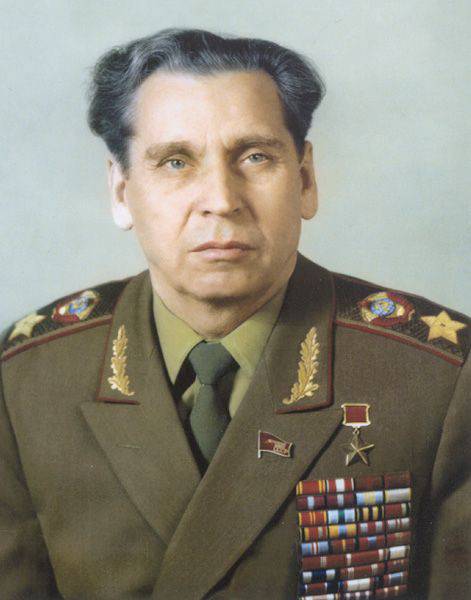
Chief of the General Staff of the USSR Armed Forces (1977-1984). (c) topwar.ru
Today it is obvious that Ogarkov's reforms in the middle of the 1980s have stalled: firstly, due to the unexpected deterioration of the political and economic situation in the Soviet Union, which ultimately led to a catastrophe, secondly, due to the more active policy of US President Ronald Reagan and finally, thirdly, due to the rapid scientific and technical progress in the field of armaments and, in particular, the emergence of high-precision weapons, which promised to radically change the environment of armed confrontation. The combined effect of these three factors led to the joint decision of Presidents Reagan and Gorbachev to end the Cold War, prompted the United States and the Soviet Union (and its successor to the Russian Federation) to engage in constructive dialogue to build genuine partnerships and changed the face of future wars. It is also obvious that, despite the striking pace of scientific and technological progress in the following years and the emergence of the Russian Federation in 1991, many aspects of the Ogarkov reforms remained quite relevant for Russian military thought, comprehending the changing nature of war and striving to create an optimal armed organization of the state in the XXI century.
A brief retrospective analysis of the military-strategic concepts of the USA and the USSR, as well as the Russian Federation in the time span from the 1960-s to the end of the first decade of the 20th century, makes it possible to single out a number of distinct stages of this cat-and-mouse game, starting from both sides recognizing the important role nuclear weapons in the late 50's.
The first stage in the evolution of strategic concepts began in 1960 with the public recognition by the Chairman of the USSR Council of Ministers Nikita Khrushchev that a “revolution” had occurred in military affairs. Taking into account the arguments of the United States, proposed in support of the massive retaliation strategy put forward in 1954, Khrushchev turned the traditional Soviet military strategy on its head, declaring the advantage of nuclear weapons and “no alternative nuclear weapons” as a means of future war . At the same time, he announced that henceforth the USSR would rely on its Strategic Missile Forces, as the most powerful type of armed forces, and not on the traditionally dominant Ground Forces.
And although the majority of high-ranking Soviet military leaders recognized the influence of nuclear weapons on the course and outcome of the war, many saw Khrushchev's reforms almost as heresy and recoiled in horror from the outlined prospect that reduced the role of the Ground Forces in the future war to the task of clearing rubble on the battlefield after the exchange of nuclear strikes.
Their resistance to Khrushchev's reforms increased even more after the United States announced a new “flexible response” strategy in 1961. According to the provisions of this strategy, nuclear parity between the USA and the USSR provides an opportunity to wage conventional wars of large and medium scale in a nuclear context without the risk of escalation towards the global exchange of nuclear strikes. The Soviet military elite, which was opposed to Khrushchev, believed that with its “flexible response” the Americans literally “beat” the USSR in terms of the possibility not to resort to nuclear weapons in a future war, and Khrushchev’s “revolution” left the country no other choice than to conduct universal nuclear war. This, in turn, pushed a number of Soviet military theorists to search for their own version of the "flexible response." Actually, the removal of Khrushchev from the post of First Secretary of the Central Committee of the CPSU in October 1964 of the year was partly due to the resistance of the military to his reforms.
The second stage began shortly after Leonid Brezhnev’s Khrushchev arrived at the end of 1964. He is characterized by the painstaking search by Soviet military theorists of the possibility of an “alternative choice” of one of two ways of waging war — with or without nuclear weapons. Despite the fact that everyone understood that the “nuclear gin” could not be pushed back into the bottle, from 1965 to the middle of 1970, the General Headquarters of the Armed Forces of the USSR was busy with a critical rethinking of the Soviet military strategy in a long but determined search for ways to get rid of The “straitjacket” inspired by the “no-alternative nuclear weapons” and the role of the Ground Forces in the “alternative choice” of one of the two methods of waging a future war.
Despite the fact that the discussion by the competent specialists of the General Staff of military strategy issues is shrouded in a thick veil of secrecy, a number of declassified official documents, open sources of information and historical studies indirectly, although not in full, fully indicate the nature of this debate. To be brief, exploring the problem of “alternative choice”, Soviet military theorists and historians searched for, identified, and then after critical analysis recommended the use of those methods strategic, operational and tactical techniques that in practice made it difficult, if not impossible, to exclude the use of nuclear weapons in a future war. Thus, by the mid-1970s, Soviet military thought, although it retained the nuclear context, was increasingly focusing on the issues of maintaining the ordinary won.
In the third stage of the evolution of strategic concepts, covering a period from approximately 1974 to 1984, the trends that emerged in the middle of 1960's were further developed. Describing that period, an authoritative source, which is the Russian "Military Encyclopedia" (edition 2002 of the year) writes:
The quantitative growth and higher-quality improvement of nuclear missile weapons (weapons) in the 70 and 80 years necessitated a review of the doctrinal installations. The Soviet Union’s awareness of the dangers of using nuclear weapons led to the adoption of a commitment not to be the first to use them ... In light of this, the USSR military doctrine began to highlight the potential for deterrence and to consider nuclear weapons as a means of retaliation in retaliatory strike. Much attention has been paid to the development and improvement of conventional means of destruction. Views have changed on the methods of conducting battles, operations and military operations in general. Received the rationale for the likelihood of fighting for a much longer period of time using exclusively conventional weapons.
The above passage describes the Soviet military doctrine of that time and the circumstances in which the concept of a strategic offensive operation for the entire depth of the theater of operations of Marshal Ogarkov was born and received practical realization (namely, the so-called "alternative choice").
This period, broadly referred to as Ogarkov's reforms, was essentially a “counter-revolution in military affairs,” which was headed by USSR Defense Ministers Marshals of the Soviet Union Andrei Grechko and Dmitry Ustinov, as well as by the Chief of the General Staff of the Armed Forces of the USSR Marshal of the Soviet Union Nikolai Ogarkov.
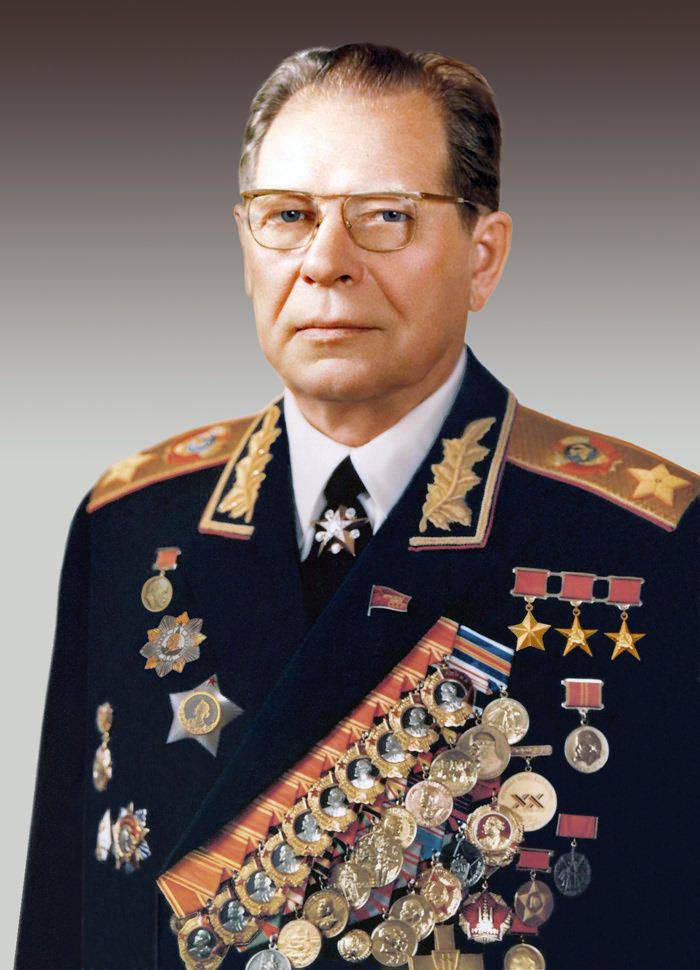
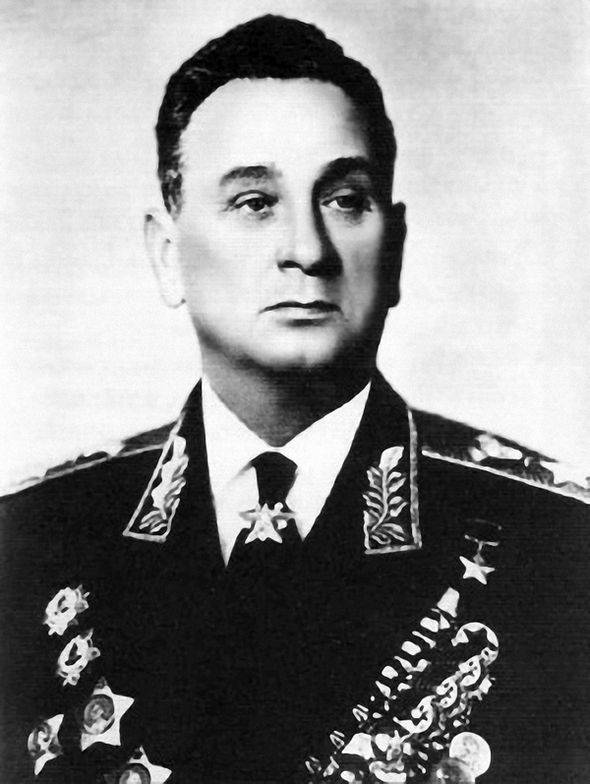
The first half of the period under review (1974-1979 years) was characterized by internal political stability in the USSR as Leonid Brezhnev strengthened his power against the background of the overt weakness of the United States in the foreign policy sphere. After the end of the Vietnam War, the United States and the West as a whole shifted to a policy of defusing international tensions (détente), which was aimed at mitigating confrontation and exploiting the weaknesses of the Soviet system. Despite the fact that the USSR responded to the West in return, detente was quickly curtailed after the Soviet troops entered Afghanistan in 1979. The second half of this period (1980-1984 of the year) is characterized by political paralysis and drift against the backdrop of the economic crisis in the Soviet Union with more active foreign policy and military strategy enforced by US President Ronald Reagan.
In military terms, by 1979, the General Headquarters of the USSR Armed Forces, under the leadership of Nikolay Ogarkov, decided on the methodology of actions and organizational forms that were considered to allow them to wage either a nuclear war or an ordinary war using such strategic, operational and tactical techniques, which were designed to reduce or even eliminate the possibility of war developing into a nuclear one. Based on a rigorous analysis of previous military experience, the capabilities of modern weapons systems and taking into account the pace of scientific and technological progress, the General Staff formulated a provision (in fact, a strategic concept) on the "strategic offensive operation in a theater of operations".
This concept provided for the conduct of strategic offensive operations for the entire depth of a theater of military operations with the use of new forms of separation of forces and methods of operational tactical maneuver, as well as formations specifically designed to make it difficult, if not completely prohibited, to use tactical nuclear weapons. In essence, this strategic concept was aimed at breaking the link between conventional military operations and their escalation towards global nuclear war. According to the definition, a strategic offensive operation in a theater of operations is “a set of coordinated and interconnected on goals, tasks, time and place battles, battles and strikes by groups of troops of various types of armed forces, carried out according to a single plan and concept under the general leadership of the Supreme High Command strategic goals of war in the theater of operations. " Its components were air operations with the aim of conquering and retaining superiority in the air; if necessary, missile strikes to destroy the enemy’s tactical and operational-tactical nuclear weapons; the rapid breakthrough of the enemy defenses by troops of the fronts, located in one echelon with a small depth of operational formation, and operational maneuver groups (OMG); the development of success and the OMG raid operations throughout the depth of the operational construction of the grouping of enemy troops, supported at the tactical level by the actions of the forward detachments and air assault units, at the operational level by paratroop landing.
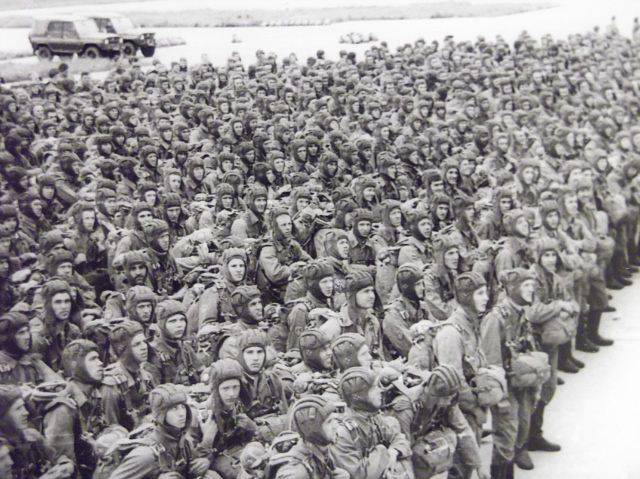
From a purely military point of view, this concept marked a triumphant rematch of operational art and tactics over strategy, since, attaching special importance to operational and tactical maneuver, as well as swift and deep strikes on numerous areas of attack, it was possible to achieve such mixing of its troops and forces with troops and enemy forces, which deprived the latter of any opportunity to use tactical nuclear weapons. Building on the theory of deep combat and deep operation developed in 1930-ies, which was perfected and improved to perfection during the Second World War and in the post-war period, Soviet military theorists suggested operational maneuverability groups (OMG) as a creative reinterpretation of mobile experience. groups (GHGs) of the time of war - as a tool for implementing operational maneuver, and forward detachments (PO) - in the updated version - for implementing tactical maneuver.
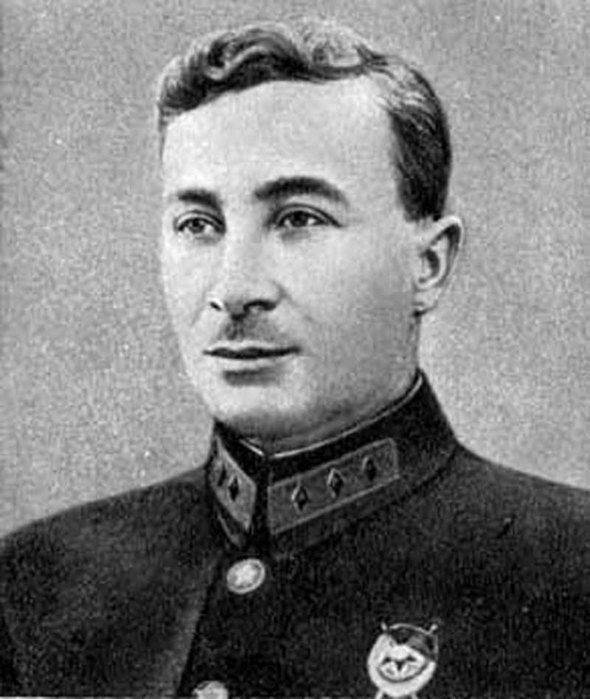
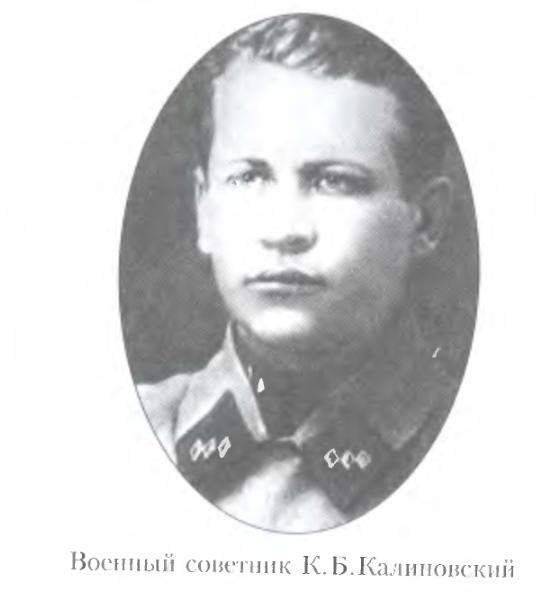
Thus, in the strategic offensive operation in the theater of operations, the advancing fronts and armies had operational formation in one echelon, having an operational maneuverable element (OMG) inside the latter or somewhat deeper from it, and a tactical maneuverable element (PO) on the edge of the advancing troops. The maneuverable elements of operational construction in their actions relied on the pace of advancement, launching into battle at its earliest stage and in many directions, flexible command and control of troops and forces in order to advance into the theater of operations in conjunction with the airborne troops landed in the airborne and airborne divisions assault brigades and representing the vertical dimension of operational and tactical maneuver.
The concept of strategic offensive operations in the theater of operations was also focused on centralized, automated, reliable and sustainable control of troops and forces, which was achieved by using information and computing systems and mathematical modeling at all levels of control; increased survivability of troops, provided by their "training", as well as "optimal" and "highly adapted" organizational forms; greater levels of mobility, firepower and stamina of troops through a wide operational and tactical maneuver. By 1984, Ogarkov had on his account:
• In the system of central military command bodies - Creation of four High Command Strategic Forces Command, designed to control nuclear and general-purpose forces that are part of the Ground Forces, Air Force and Naval Forces foreign troops groups and troops of the border military districts The Dnevostochny, Western, South-Western and Southern strategic areas for the preparation and conduct of strategic offensive operations in these theaters.
• In groups of forces abroad and in internal military districts — tank armies in front lines and tank divisions in armies, designed and adapted for operational maneuver; separate tank regiments in the composition of armies and reinforced tank battalions in the composition of motorized rifle divisions, organized and equipped to act as forward detachments for the implementation of tactical maneuver; airborne (airmobile) divisions, as well as airborne assault brigades and separate battalions, designed for vertical coverage in the implementation of operational and tactical maneuver; Special purpose brigades, whose task was to conduct reconnaissance and sabotage operations in the enemy’s rear (they all had “training”, “optimal organization” and were equipped with new models of tanks, infantry fighting vehicles, self-propelled artillery mounts and other weapons at a high scientific and technical level, as well as with command and control systems for troops and forces). In addition, as an experiment, new separate army corps (KLA) were deployed in the Soviet Army, which were intended to become the nucleus of future OMG, including the 5 and 48 Guards KLA, respectively, in the Belarusian and Trans-Baikal military districts. Both corps were composed of tank and motorized rifle brigades, staffed by special states.
It seems that, upon reaching maturity, the concept of a strategic offensive operation on the theater of operations provided the USSR with a clear advantage in the area of national security and the conduct of a future war. Nevertheless, despite the temptation of this concept, its effectiveness was due to four major assumptions - first, that the United States and China posed the most serious threat in the future and that nuclear parity and the American strategy of “defense sufficiency” (defensive sufficiency) reduced the likelihood global nuclear war and contributed to the growth of the ability to conduct conventional strategic operations in the context of "nuclear fear"; secondly, that the presumed US weakness was real and will continue to be so; thirdly, that the USSR was able to economically ensure measures related to the development and practical implementation of the concept; and fourthly, that the viability of the concept will not be called into question due to the limited scientific and technical potential of the country.
However, all these assumptions turned out to be wrong after a number of domestic and foreign policy problems intervened in the natural course of events from 1980 to 1984, which not only challenged Ogarkov's reforms and made their continuation impossible, but also, in the end, shook the Soviet Union to its very foundation. These problems included, among other things, internal political and economic difficulties that buried the hopes of the Soviet leadership and gave rise to a whole heap of new problems that marked the beginning of the end not only of Ogarkov’s reforms, but also of the entire communist system of power in the country. The political and economic drift that followed led to the election of 11 in March of 1985 by General Secretary of the Central Committee of the CPSU, Mikhail Gorbachev.
Domestic problems were aggravated by the adoption of a “direct confrontation” strategy by the newly elected US President Ronald Reagan in 1980, which replaced the concept of “defense sufficiency”. The new strategy proclaimed that “when and where it is possible, the United States will actively oppose the USSR and the Warsaw Pact at the global and regional levels”. In particular, in 1981, Reagan announced his intention to renew the B-1B strategic bomber program, to use the MX Peacekeeper intercontinental ballistic missiles and to begin with the deployment of Europe's medium-range ballistic missiles in nuclear equipment in 1983. Subsequently, in March 1983, he proclaimed the "Strategic Defense Initiative" (Strategic Defense Initiative, SDI - SOI) and in November of the same year began to deploy Pershing II embassy in Europe. All these measures became integral parts of the so-called Reagan Doctrine, which also provided for the provision of open and secret support to the anti-communist rebel movement, aimed at "deterring" the pro-communist guerrilla in Africa, Asia and Latin America.
It is quite natural that the Soviet leadership saw in the Reagan doctrine nothing more than the US attempt to achieve complete and unquestionable superiority and take a dominant position in the world by implementing programs or taking actions aimed at restoring American military power and countering the successes of the USSR achieved in 1970. years, or even just throwing the Soviet Union back. In the eyes of the Soviet leadership, the deployment of Pershing II USBRD in Europe not only strengthened the link between conventional warfare with the possible use of tactical nuclear weapons and the global exchange of nuclear missile strikes, but also increased the likelihood of the United States creating first strike capability .
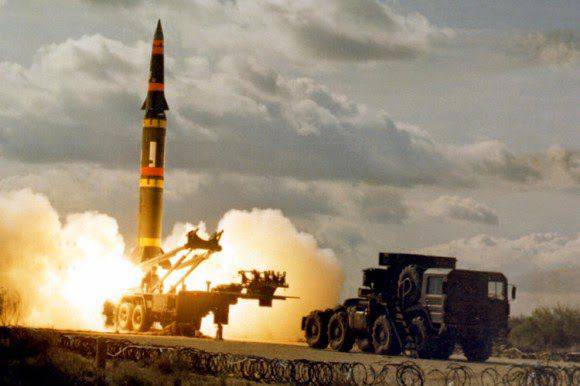
In short, it was a sharp knife at the very heart of the Ogarkov concept of a strategic offensive operation in the theater of operations, undermining the very foundations of the “alternative choice”. And even worse, with all the seemingly unrealistic design, the Strategic Defense Initiative (SDI) threatened to upset the balance of strategic nuclear forces and, in the most unfavorable scenario, seemed to some Soviet leaders to, in fact, “psychological preparation of the American people to unleash a nuclear war” .
Without dwelling on a detailed account of all the events that took place between 1981 and 1984 for years, we will limit ourselves to stating that Reagan’s policy resulted not only in rejecting Ogarkov’s strategic concept and curtailing the military reforms he had planned, but, combined with the internal problems of the USSR, led to the replacement of Nikolay Ogarkov in September 1984 as Chief of the General Staff of the USSR Armed Forces. It was supplemented by the death of Defense Minister Dmitry Ustinov in December of the same year. Within a few months, Mikhail Gorbachev presented his program of internal political transformations, called “acceleration,” and launched a discussion around the dual concept of “defensive orientation” and “defense sufficiency.”
The fourth stage of the evolution of Soviet strategic military thought covers the time span from 1985 to 1991 years. Three waves of Gorbachev's reforms, designed to reverse the political and economic extinction of the USSR, served as a backdrop to the military transformation itself. However, these reforms shook to the ground the entire building of the Soviet political system and led to truly revolutionary changes in military doctrine and military strategy, which marked a complete separation from the attitudes that prevailed in Soviet military thought for more than two previous decades. Perhaps the most important was the recognition by Gorbachev at the XXVII CPSU Congress in February 1986 that “the nature of modern weapons does not allow any state to hope for its own defense using only military-technical means, even by creating the most powerful defense”.
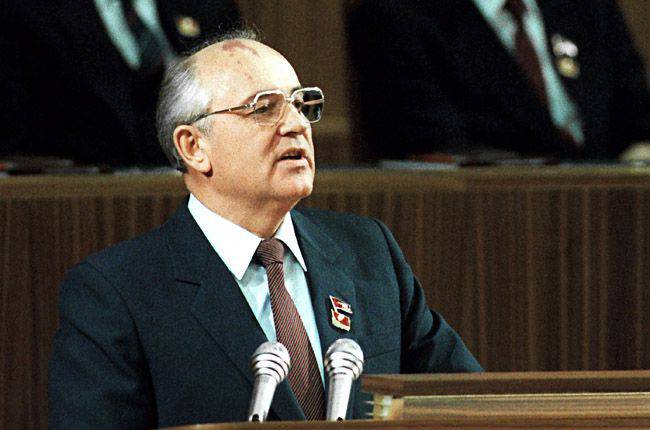
This statement completely overturned the Soviet military doctrine, introducing the concept of "defensive orientation", along with the concept of "defense sufficiency". Otherwise, this turbulent period was marked by intense summit meetings between Gorbachev and Reagan and the resulting nuclear arms reduction and arms control treaties, and under 1988, to draw a line under the Cold War, liquidating the Warsaw Treaty Organization in 1989 year and finally the collapse of the Soviet Union in 1991.
Militarily, this period was characterized by desperate, on the verge of common sense, the efforts of Soviet military theorists to define the concepts of “defensive orientation” and “defense sufficiency”; destruction of the strategic depth of the space controlled by the Soviet Union through the loss of the first strategic echelon in 1989 and most of the second strategic echelon after 1991; difficult search for organizational forms that best meet the concept of “defensive orientation” and arms control measures (staffs of 1987, 1989 and 1990 years), and perhaps most importantly, the conviction of the General Staff that a new “revolution in military affairs ", associated with the advent of high-precision weapons of a new generation, as well as weapons based on new physical principles (especially after the 1991 war in the Persian Gulf).
The Russian Military Encyclopedia (edition of 2002 of the year) reflected these changes in this way:
In its development, domestic military thought in the second half of the 80-s approached the historical turn. The final awareness of the destructive consequences of using weapons of mass destruction against the background of a sharp increase in the destructive properties of conventional weapons, their accuracy and range, as well as an understanding of the inevitability of an environmental catastrophe if used, taking into account the massive destruction of nuclear reactors, chemical plants and hydraulic structures led to the conclusion of unacceptability in modern conditions, the aspirations of individual states to achieve their political goals by military means and in possible threat from their side to the existence of world civilization. Taking this into account, the Soviet Union, together with the member states of the Warsaw Pact, in 1987, adopted a fundamentally new defensive doctrine, reflecting positive developments in international relations. This new approach is reflected in the published draft of the Soviet military doctrine. If in previous years military doctrine included views on the preparation and conduct of war, the new document gave priority to provisions for its prevention.
This passage gives an idea of the motives of “defense sufficiency” proclaimed by Gorbachev. To be brief, Gorbachev’s change at the root of traditional Soviet military doctrine resulted in equally dramatic changes in Soviet military strategy. They included a decisive rejection of many Ogarkov installations associated with a strategic offensive operation on theaters and a broad discussion on what should be understood by "defensive orientation" and "defense sufficiency." To top it all, the military faced the unprecedented audacity of some peoples of the USSR, who, taking advantage of the marked weakness of the Soviet Union, declared their claims to independence. These crucially important changes in the military field led first to the collapse of the Warsaw Pact Organization in the 1989 year, and then, two years later, the Soviet Union itself.
The fifth stage in the development of Russian military strategy began in the 1992 year, when the military leadership of the Russian Federation began to study the changing nature of war in order to create armed forces that meet the challenges of the 21st century, the most serious of which was a sharp reduction in the size of Russia. However, the ideas once laid by Ogarkov in his reforms were not sent to the dustbin of history. And here it is important to realize that, firstly, despite the internal political instability, the General Staff continued to function, and secondly, these political irregularities could neither change the military-technical environment, nor slow down the pace of scientific and technological progress . Therefore, the same scientific and technical trends that gave impetus to Ogarkov’s reforms in the late 1970s and early 1980s, retained their effect and even accelerated it in the 1990s. Recognizing these changes and following them in a completely new strategic context, the military theorists of the General Staff of the Armed Forces of the Russian Federation were based on Ogarkov’s conclusions when planning military reform measures during the presidency of Boris Yeltsin, Vladimir Putin, and Dmitry Medvedev.
As a consequence, the most important aspects of Ogarkov’s transformations remained relevant, although on a very limited scale, and determined the steady, albeit cautious, course of military reforms during the reign of Gorbachev’s political heirs. At the same time, the most important of Ogarkov’s legacy should be his persistent desire to create government bodies necessary and sufficient for preparing and conducting operations across the theater, his conviction in the expediency of operational and tactical maneuver in wartime, called Russian military thought in 1990. “Focal” (ie, non-linear), and its focus on the use of advances in computer technology and mathematical modeling methods in the interests of planning and conducting combat operations, as well as rule them. By 2014, these trends began to be clearly seen in the decisions of the Ministry of Defense of the Russian Federation on the creation of new military leadership bodies in theaters of operations (strategic directions) and on the transition to the brigade-battalion organization of troops, as well as in the cult of the information war doctrine. As a summary: the continuity is indeed preserved - even in times of revolutionary change.


Information